Antoine-Laurent de Lavoisier (French: [ɑ̃twan lɔʁɑ̃ də lavwazje] UK: /læˈvwʌzieɪ/ lav-WUZ-ee-ay,[1] US: /ləˈvwɑːzieɪ/ lə-VWAH-zee-ay,[2][3]; 26 August 1743 – 8 May 1794),[4] also Antoine Lavoisier after the French Revolution, was a French nobleman and chemist who was central to the 18th-century chemical revolution and who had a large influence on both the history of chemistry and the history of biology.[5] It is generally accepted that Lavoisier's great accomplishments in chemistry stem largely from his changing the science from a qualitative to a quantitative one. Lavoisier is most noted for his discovery of the role oxygen plays in combustion. He recognized and named oxygen (1778) and hydrogen (1783), and opposed the phlogiston theory. Lavoisier helped construct the metric system, wrote the first extensive list of elements, and helped to reform chemical nomenclature. He predicted the existence of silicon (1787)[6] and discovered that, although matter may change its form or shape, its mass always remains the same.
Lavoisier was a powerful member of a number of aristocratic councils, and an administrator of the Ferme générale. The Ferme générale was one of the most hated components of the Ancien Régime because of the profits it took at the expense of the state, the secrecy of the terms of its contracts, and the violence of its armed agents.[7] All of these political and economic activities enabled him to fund his scientific research. At the height of the French Revolution, he was charged with tax fraud and selling adulterated tobacco, and was guillotined.
Antoine-Laurent de Lavoisier | |
|---|---|
 | |
| Born | 26 August 1743 |
| Died | 8 May 1794 (aged 50) Paris, France |
| Cause of death | Execution by guillotine |
| Resting place | Catacombs of Paris |
| Alma mater | Collège des Quatre-Nations, University of Paris |
| Known for | |
| Spouse(s) | Marie-Anne Paulze Lavoisier(married 1771–1794) |
| Scientific career | |
| Fields | Biologist, chemist |
| Notable students | Éleuthère Irénée du Pont |
| Influences | Guillaume-François Rouelle, Étienne Condillac |
| Signature | |
 | |
Legacy
Lavoisier's fundamental contributions to chemistry were a result of a conscious effort to fit all experiments into the framework of a single theory. He established the consistent use of the chemical balance, used oxygen to overthrow the phlogiston theory, and developed a new system of chemical nomenclature which held that oxygen was an essential constituent of all acids (which later turned out to be erroneous).
Lavoisier also did early research in physical chemistry and thermodynamics in joint experiments with Laplace. They used a calorimeter to estimate the heat evolved per unit of carbon dioxide produced, eventually finding the same ratio for a flame and animals, indicating that animals produced energy by a type of combustion reaction.
Lavoisier also contributed to early ideas on composition and chemical changes by stating the radical theory, believing that radicals, which function as a single group in a chemical process, combine with oxygen in reactions. He also introduced the possibility of allotropy in chemical elements when he discovered that diamond is a crystalline form of carbon.
He was also responsible for the construction of the gasometer, an expensive instrument he used at his demonstrations. While he used his gasometer exclusively for these, he also created smaller, cheaper, more practical gasometers that worked with a sufficient degree of precision that more chemists could recreate.[46]
He was essentially a theorist, and his great merit lay in his capacity to take over experimental work that others had carried out—without always adequately recognizing their claims—and by a rigorous logical procedure, reinforced by his own quantitative experiments, expounding the true explanation of the results.[citation needed] He completed the work of Black, Priestley and Cavendish, and gave a correct explanation of their experiments.
Overall, his contributions are considered the most important in advancing chemistry to the level reached in physics and mathematics during the 18th century.[47]
Awards and honours
During his lifetime, Lavoisier was awarded a gold medal by the King of France for his work on urban street lighting (1766), and was appointed to the French Academy of Sciences (1768).[9] He was elected as a member of the American Philosophical Society in 1775.[48]
Lavoisier's work was recognized as an International Historic Chemical Landmark by the American Chemical Society, Académie des sciences de L'institut de France and the Société Chimique de France in 1999.[49] Antoine Laurent Lavoisier's Louis 1788 publication entitled Méthode de Nomenclature Chimique, published with colleagues Louis-Bernard Guyton de Morveau, Claude Louis Berthollet, and Antoine François, comte de Fourcroy,[50] was honored by a Citation for Chemical Breakthrough Award from the Division of History of Chemistry of the American Chemical Society, presented at the Académie des Sciences (Paris) in 2015.[51][52]
A number of Lavoisier Medals have been named and given in Lavoisier's honour, by organizations including the Société chimique de France, the International Society for Biological Calorimetry, and the DuPont company[53][54][55] He is also commemorated by the Franklin-Lavoisier Prize, marking the friendship of Antoine-Laurent Lavoisier and Benjamin Franklin. The prize, which includes a medal, is given jointly by the Fondation de la Maison de la Chimie in Paris, France and the Science History Institute in Philadelphia, PA, USA.[56][57]
https://en.wikipedia.org/wiki/Antoine_Lavoisier
Portrait of Antoine-Laurent Lavoisier and his Wife
Artist Jacques-Louis David
Year 1788 Medium oil on canvas
Dimensions 259.7 cm × 194.6 cm (102.2 in × 76.6 in)
Location Metropolitan Museum of Art, New York
https://en.wikipedia.org/wiki/Portrait_of_Antoine-Laurent_Lavoisier_and_his_Wife
https://en.wikipedia.org/wiki/Redox
https://en.wikipedia.org/wiki/Caloric_theory
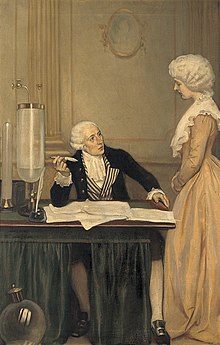
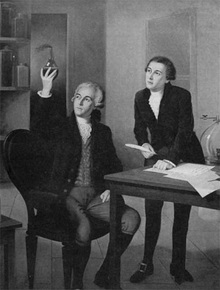

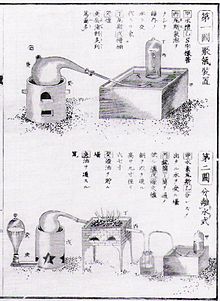
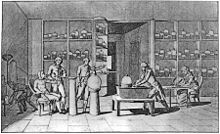
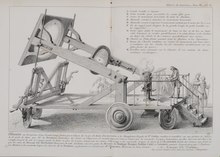

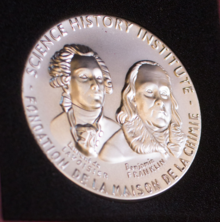

No comments:
Post a Comment